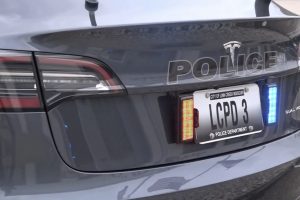Key Points
- 😮 The California DMV has requested Cruise, General Motors’ self-driving unit, to temporarily reduce its robotaxi fleet in San Francisco by 50%.
- 🚗 The request follows a recent crash involving one of Cruise’s driverless vehicles and a fire truck.
- 🕵️♀️ The California DMV is investigating concerning incidents related to autonomous robotaxis in the city.
- 🛑 Cruise must lower its San Francisco fleet size until the investigation concludes and safety measures are implemented.
- 🚦 The DMV reserves the right to suspend or revoke testing/deployment permits if there’s an unreasonable risk to public safety.
- 📄 Cruise released a blog post explaining the crash circumstances, stating the robotaxi identified the emergency vehicle and initiated a braking maneuver but couldn’t avoid the collision.
- 🌆 Despite over 3 million miles of autonomous driving, Cruise has encountered numerous emergency vehicle interactions.
- 👍 Cruise remains committed to continuous improvement in partnership with regulators and city departments to enhance safety during emergency vehicle interactions.
The California Department of Motor Vehicles (DMV) has directed Cruise, General Motors’ self-driving division, to temporarily scale down its robotaxi fleet by 50% in San Francisco. This decision stems from an incident where one of the company’s autonomous vehicles was involved in a collision with a fire truck last week.
The California DMV has acknowledged its ongoing investigation into “recent concerning incidents” related to autonomous robotaxis within the city. In light of these developments, the DMV has advised Cruise to reduce its San Francisco fleet by half while the investigation is underway and until the self-driving company implements necessary measures to enhance road safety.
Following is the CA DMV’s statement about Cruise’s recent robotaxi incidents.
“Safety of the traveling public is the California DMV’s top priority. The primary focus of the DMV’s regulations is the safe operation of autonomous vehicles and safety of the public who share the road with these vehicles.
“The DMV is investigating recent concerning incidents involving Cruise vehicles in San Francisco. The DMV is in contact with Cruise and law enforcement officials to determine the facts and requested Cruise to immediately reduce its active fleet of operating vehicles by 50% until the investigation is complete and Cruise takes appropriate corrective actions to improve road safety. Cruise has agreed to a 50% reduction and will have no more than 50 driverless vehicles in operation during the day and 150 driverless vehicles in operation at night.
“The DMV reserves the right, following investigation of the facts, to suspend or revoke testing and/or deployment permits if there is determined to be an unreasonable risk to public safety.”
With Cruise agreeing to reduce its fleet by 50%, the company also released a blog post explaining the circumstances that led up to the accident. As per Cruise, the robotaxi identified the emergency vehicle almost immediately as it came into video. The robotaxi operator also noted that the vehicle initiated a braking maneuver and reduced its speed, but it was ultimately unable to avoid the collision.
Following is Cruise’s post about the incident.
“While our investigation is ongoing and we remain in contact with city officials and regulators, we wanted to provide an update on our preliminary analysis on the incident involving an emergency vehicle colliding with a Cruise AV.
“First and foremost, our primary concern remains with our passenger and their well-being. We have been in contact to offer support and will remain in touch.
“In terms of what occurred around the scene of the collision there are many aspects that looked typical from the AV’s perspective and several factors that added complexity to this specific incident.
“The AV positively identified the emergency vehicle almost immediately as it came into view, which is consistent with our underlying safety design and expectation. It is worth noting, however, that the confines of this specific intersection make visual identification more challenging – for humans and AVs alike – as it is significantly occluded by buildings, meaning that it is not possible to see objects around the corner until they are physically very close to the intersection.
“The AV’s ability to successfully chart the emergency vehicle’s path was complicated by the fact that the emergency vehicle was in the oncoming lane of traffic, which it had moved into to bypass the red light.
“Cruise AVs have the ability to detect emergency sirens, which increase their ability to operate safely around emergency vehicles and accompanying scenes. In this instance, the AV identified the siren as soon as it was distinguishable from the background noise.
“The Cruise AV did identify the risk of a collision and initiated a braking maneuver, reducing its speed, but was ultimately unable to avoid the collision.
“During the course of more than 3 million miles of fully autonomous driving in San Francisco we’ve seen an enormous number of emergency vehicles – more than 168,000 interactions just in the first 7 months of this year alone. Our first responders are trying to balance keeping all of us safe while quickly responding to emergency scenes and we’re grateful for their work and dedication.
“We realize that we’ll always encounter challenging situations, which is why continuous improvement is central to our work. We will continue to work in partnership with regulators and city departments on EMV interactions to reduce the likelihood of incidents like these happening again.”





